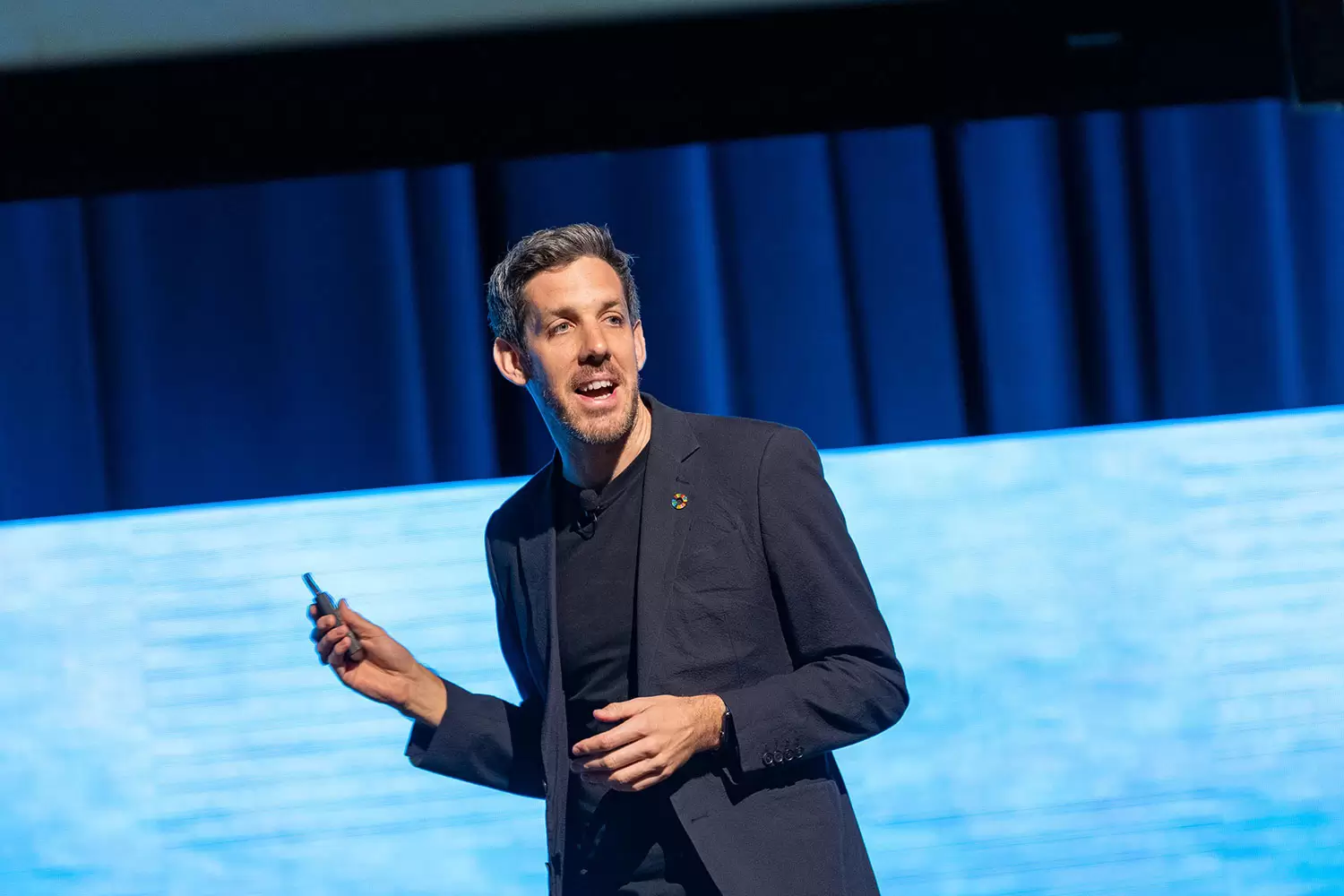Matt Gough’s keynote at the World Engineers Convention focused on how and why the construction industry must move to be more sustainable.
Gough is currently the Director of Innovation at MACE, the construction company behind structures such as The Shard and the London Eye. It’s great to create projects like this and to shape city skylines, he said, but more importantly flagship projects like these not only create the vision of the industry we want, but serve to create contrast when things go wrong in construction.
The Grenfell fire in London, the Morandi Bridge collapse in Genoa and the Opal Tower cracking in Sydney reinforce the importance of making improvements in how the construction industry operates.
“We are in an age of exponential growth – small improvements are not enough. We have to do better,” he said.
Why construction?
By 2050, there will be 10 billion people on the planet; 70 per cent will live in cities, which means we need to “build the equivalent of New York City every month to accommodate this change”, Gough said.
As a result, construction is going through a period of disruption, but it’s not coming from the usual digital sources that other industries are facing. Rather, he said, the climate emergency is the biggest disrupter the construction industry and the built environment face today.

“When I joined construction, everyone was talking about how digital technology would disrupt the industry,” he said.
“But it’s not a panacea. It’s enabling a lot of things to be done better, but not necessarily better things.”
The difference is crucial, he said, but one feeds into the other. It’s important to do things better – to be more efficient, less wasteful, less labour-intensive – because it means the industry can focus on making the built environment as sustainable as possible.
The reason the industry needs to think more about sustainability, he said, is that construction is a big polluter: it accounts for 30-37 per cent of total carbon emissions. If the cement industry were a country, it would be the third largest contributor of carbon emissions behind the US and China.
“We have a pivotal role to play in making sure the planet stays habitable,” he said.
“It’s not our task alone, but reduction targets are not achievable without us.”
Learning from others
To create this change, Gough suggested borrowing techniques from elsewhere to bring in advancements that help construction do more with less – less waste, less cost, less emissions.
One idea is bringing elements from manufacturing into construction. There is lots of interest from construction companies, investors and governments in modular construction as a way to take work offsite, and the technique is being explored for houses to high-rises as a way to meet future demand quickly and efficiently.
But what about creating factory conditions onsite? Gough spoke about the ways MACE is experimenting with “assembling buildings like the automotive industry assembles cars”.
As an example, MACE’s recent NO 8 project in London was built in an innovative way to eliminate many of the factors that can cause issues on construction sites, like high winds, delays and the dangers of working at great heights.
To work around these, MACE brought the assembly floor to the high-rise by building two, 600 tonne steel structures that act as rising factories. As floors are built, the rising factories ‘jump’, using the same amount of force as what’s required to launch a rocket into space. (Gough joked they called these factories MACE X).
Building something in this way is unusual, but Gough said the benefits for construction are evident. No tower cranes were required, labour onsite was reduced by 50 per cent, and because it was a closed environment there were fewer safety incidents, less risk of falls or dropping something, and no leading edge.
All together, they built two 36-storey high-rises in 18 weeks – 30 per cent faster than traditional methods. Other benefits included a 40 per cent reduction in vehicle movements (which meant less emissions and happier neighbours), and a 70 per cent less construction waste.
“Make better choices”
This example illustrates that it is possible for construction to do better, but Gough stressed there is still work to be done.
“We are asking people to make good choices and do better, because it doesn’t just make sense environmentally – it makes sense financially,” he said.
He recalled an incident where one employee asked a supplier to stop providing fittings wrapped in single use plastics. It seemed like a simple request at the time, but it reduced the amount of waste produced during construction, and saved both the supplier and the customer time and money. When viewed through the scale of how many fittings are required for any project, this small change can have a massive impact.
“It pays to be sustainable,” Gough said.
He ended his session with a call to action for the engineers in attendance: make better choices.
“We have to build more, but we have to do that in a better way and make better choices,” he said.
“Reversing climate change is not going to happen without the construction industry’s help.”
The world has changed dramatically since WEC was held in November 2019. Join us online on 18–20 November as we bring back WEC keynotes to discuss how the world and the engineering landscape has altered and what the future has in store. Register now for the World Engineers Symposium.